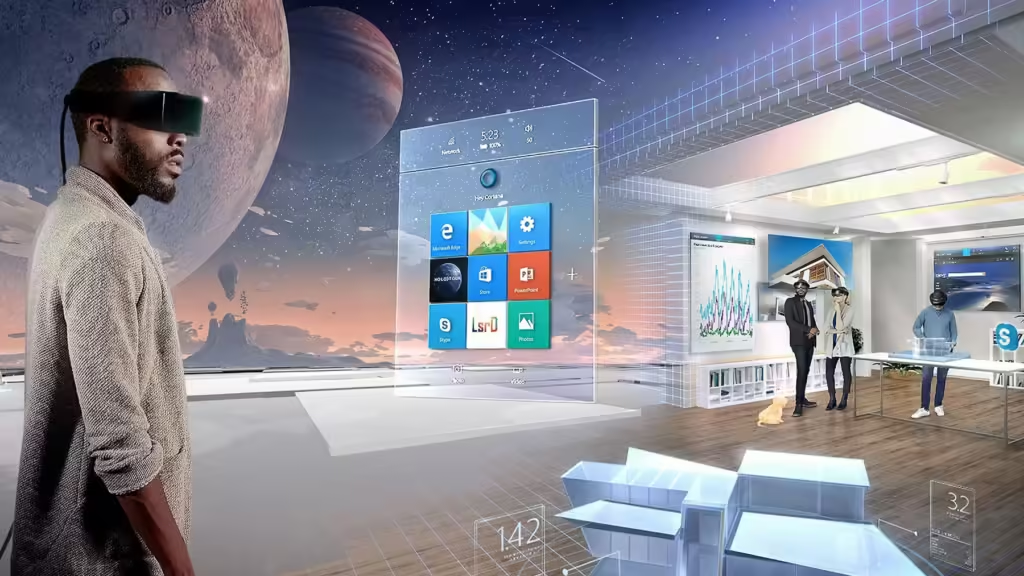XVIF, short for “Extended Virtual Interface Framework,” is a technology designed to improve communication between virtual and physical devices. It enables seamless data transfer and interaction, making it easier for different systems to work together. This framework is especially useful in environments where virtual and real-world applications need to operate smoothly and efficiently.
Imagine a world where your virtual devices and real-world tools work together flawlessly, no delays, no complications—just perfect harmony. That’s the promise of XVIF. This game-changing technology is designed to bridge the gap between the digital and physical worlds, making your tech experiences smoother than ever. Curious to learn how? Dive into the world of XVIF and discover the future of seamless connectivity.
The Genesis of XVIF
- Initial Conceptualization:
- XVIF began as an idea to address the growing need for better integration between virtual and physical systems.
- The focus was on creating a unified framework that could facilitate seamless communication across diverse platforms.
- Early Development:
- A team of engineers and developers started by identifying the key challenges in existing systems.
- They worked on designing protocols that could handle complex interactions between devices with minimal latency.
- Key Innovations:
- The introduction of adaptive interfaces that could easily connect with various hardware and software components.
- Development of a robust data transfer mechanism to ensure reliable and fast communication between virtual and physical entities.
- Prototyping and Testing:
- Initial prototypes of XVIF were tested in controlled environments to refine its functionality.
- Feedback from these tests led to significant improvements in the framework’s design and performance.
- Launch and Adoption:
- XVIF was officially launched after rigorous testing and validation.
- It quickly gained traction in industries that required high levels of integration between digital and real-world applications, such as smart homes, industrial automation, and augmented reality.
- Impact on Technology:
- XVIF set a new standard for connectivity, influencing the development of similar technologies.
- Its success highlighted the importance of creating adaptable and efficient frameworks in the rapidly evolving tech landscape.
How XVIF Operates

“XVIF operates by serving as a bridge between virtual and physical systems, ensuring smooth communication and data transfer. Revo Technologies plays a pivotal role in this process, managing interactions between different devices and enabling them to work together seamlessly. This coordination allows for efficient execution of tasks across multiple platforms, enhancing overall performance and user experience.”
Data Transmission
The core of XVIF’s functionality lies in its data transmission capabilities. It collects data from various sources, whether virtual or physical, and prepares it for transfer. The system is designed to handle large volumes of data, ensuring that information flows quickly and accurately between connected devices.
Signal Encoding
Before data can be transmitted, XVIF encodes the signals into a format that can be easily understood by both sending and receiving devices. This encoding process ensures that the data remains intact during transmission, minimizing the risk of errors and data loss.
Transmission Path
Once encoded, the data travels through a carefully managed transmission path. XVIF optimizes this path to ensure the fastest and most reliable delivery of information. By choosing the most efficient route, XVIF reduces latency and improves the overall speed of communication.
Signal Decoding
At the receiving end, XVIF decodes the signals back into their original format. This decoding process is crucial for accurate interpretation of the transmitted data. The system ensures that the information is received exactly as it was sent, maintaining the integrity of the communication.
Image Display
In applications involving visual data, XVIF handles the display of images by converting the transmitted data into clear, high-quality visuals. Whether it’s on a screen or through augmented reality devices, XVIF ensures that the images are displayed accurately and in real-time.
Continuous Communication
XVIF is designed for continuous communication, allowing devices to stay connected without interruptions. This ongoing interaction is essential for systems that require constant updates and real-time responses. By maintaining a steady flow of data, XVIF supports the seamless operation of interconnected devices.
Advantages of XVIF
| Advantages of X5IF | Description |
| Superior Image Quality | X5IF delivers high-resolution images with vivid colors and sharp details, enhancing visual clarity. |
| Smoother Video Playback | The framework ensures uninterrupted video playback with minimal buffering and lag, providing a better viewing experience. |
| Higher Bandwidth | X5IF supports higher data transmission rates, allowing for faster and more reliable communication between devices. |
| Future-Proof Design | The technology is built to adapt to future advancements, ensuring long-term relevance and compatibility with new systems. |
| Enhanced Compatibility | XVIF is designed to work seamlessly with a wide range of devices and platforms, ensuring broad usability and integration. |
Key Features of XVIF
XVIF is packed with features that make it a powerful and versatile technology for modern communication systems. These key features enhance its performance, reliability, and adaptability, making it a preferred choice for a wide range of applications.
High Bandwidth

One of the standout features of XvIF is its ability to support high bandwidth. This means it can handle large amounts of data being transmitted simultaneously without any slowdowns. High bandwidth is crucial for applications that require fast and efficient data transfer, such as streaming high-definition content or managing complex digital systems.
Support for Ultra-High Resolutions
XvIF is designed to support ultra-high resolutions, ensuring that images and videos are displayed with exceptional clarity and detail. Whether it’s 4K, 8K, or beyond, can deliver stunning visuals that meet the demands of the most advanced display technologies. This makes it ideal for use in settings like home theaters, gaming setups, and professional visual applications.
Deep Color Support
In addition to high resolutions, XV,IF offers deep color support, which enhances the richness and accuracy of the colors displayed on the screen. This feature is particularly important for graphic designers, video editors, and anyone who relies on precise color representation. With deep color support, XV,IF brings images to life with vibrant and true-to-life colors.
Low Latency
XV.IF is engineered to minimize latency, ensuring that data is transmitted and received almost instantaneously. Low latency is essential for applications where real-time interaction is critical, such as online gaming, live streaming, and virtual reality. By reducing delays, XV.IF ensures a smooth and responsive user experience.
Backward Compatibility
Another important feature of XV.IF is its backward compatibility. This means that it can work seamlessly with older devices and technologies, making it easier to integrate into existing setups. Users don’t have to worry about replacing all their equipment; X.VIF ensures smooth operation across both new and legacy systems.
Future-Proofing
XVIF is designed with the future in mind. Its architecture is flexible and scalable, allowing it to adapt to new technologies and standards as they emerge. This future-proofing ensures that XVIF remains relevant and effective in the long term, providing users with a technology that can grow and evolve alongside their needs.
Applications of XVIF
XVIF has a wide range of applications, leveraging its advanced data transmission and compatibility features to enhance various fields. Its ability to bridge virtual and physical systems makes it a versatile tool across different industries. From gaming to professional environments, is becoming an integral part of modern technology.
Gaming

In the gaming industry, is revolutionizing the way players experience games. It enables ultra-smooth gameplay by reducing latency and enhancing visual quality. Gamers benefit from more immersive experiences, with ensuring that both virtual and physical components, such as VR headsets and controllers, work in perfect harmony.
Professional Applications
Is also making a significant impact in professional settings, particularly in fields like design, engineering, and healthcare. It allows for real-time collaboration between teams using different devices and platforms, ensuring that data is shared and displayed accurately. This capability is crucial in environments where precision and speed are essential for success.
Consumer Electronics
In the world of consumer electronics, XVIF’s is driving the next wave of innovation. It enhances the performance of smart devices, from TVs to home automation systems, by ensuring seamless connectivity and data exchange. Consumers enjoy faster, more responsive gadgets that work together effortlessly, thanks to robust framework.
Implementing XVIF in Your Business

Implementing XVIF in your business involves integrating this advanced framework to enhance connectivity and efficiency. Start by assessing your current technology setup to identify areas where can provide the most value, such as improving data transfer or streamlining device interactions.
Next, work with a technology partner to customize and deploy , ensuring it aligns with your specific needs and systems. Finally, train your team to effectively use the new technology, and monitor its performance to optimize its impact on your operations and overall business performance.
XVIF vs. Existing Standards
XVIF stands out from existing standards by offering a more integrated and versatile approach to device communication. Unlike traditional protocols, which often focus on single types of interactions or data transfer, supports a wide range of devices and applications with enhanced efficiency.
Its advanced encoding and decoding methods reduce latency and improve data accuracy, setting it apart from older standards that struggle with high-speed, multi-device environments. This modern framework is designed to be future-proof, accommodating emerging technologies and ensuring long-term compatibility.
The Future of Display Technology with XVIF
XVIF is poised to revolutionize display technology by enhancing image quality and performance. With its advanced data transmission and encoding techniques, it promises to deliver crystal-clear visuals and smoother video playback, setting a new standard for screen clarity and responsiveness. As technology progresses, XVIF’s adaptability will ensure it continues to meet the demands of future display innovations.
Looking ahead, XVIF’s future-proof design will support the integration of emerging technologies, from augmented reality to ultra-high-definition displays. Its high bandwidth and compatibility will enable seamless experiences across various devices, paving the way for more immersive and interactive visual technologies.
Conclusion
XVIF represents a significant leap forward in the realm of technology, offering enhanced connectivity and superior performance. Its advanced data handling capabilities ensure high-quality image and video experiences, while its future-proof design prepares it for evolving technological demands. By bridging the gap between virtual and physical systems, sets a new benchmark for seamless integration and efficient communication.
As technology continues to advance, XVIF’s role in shaping the future of display and connectivity will become increasingly vital. Its ability to adapt to new innovations and maintain high performance across various platforms makes it a crucial tool for both current and future technological landscapes. Embracing will not only improve user experiences today but also pave the way for tomorrow’s breakthroughs.



